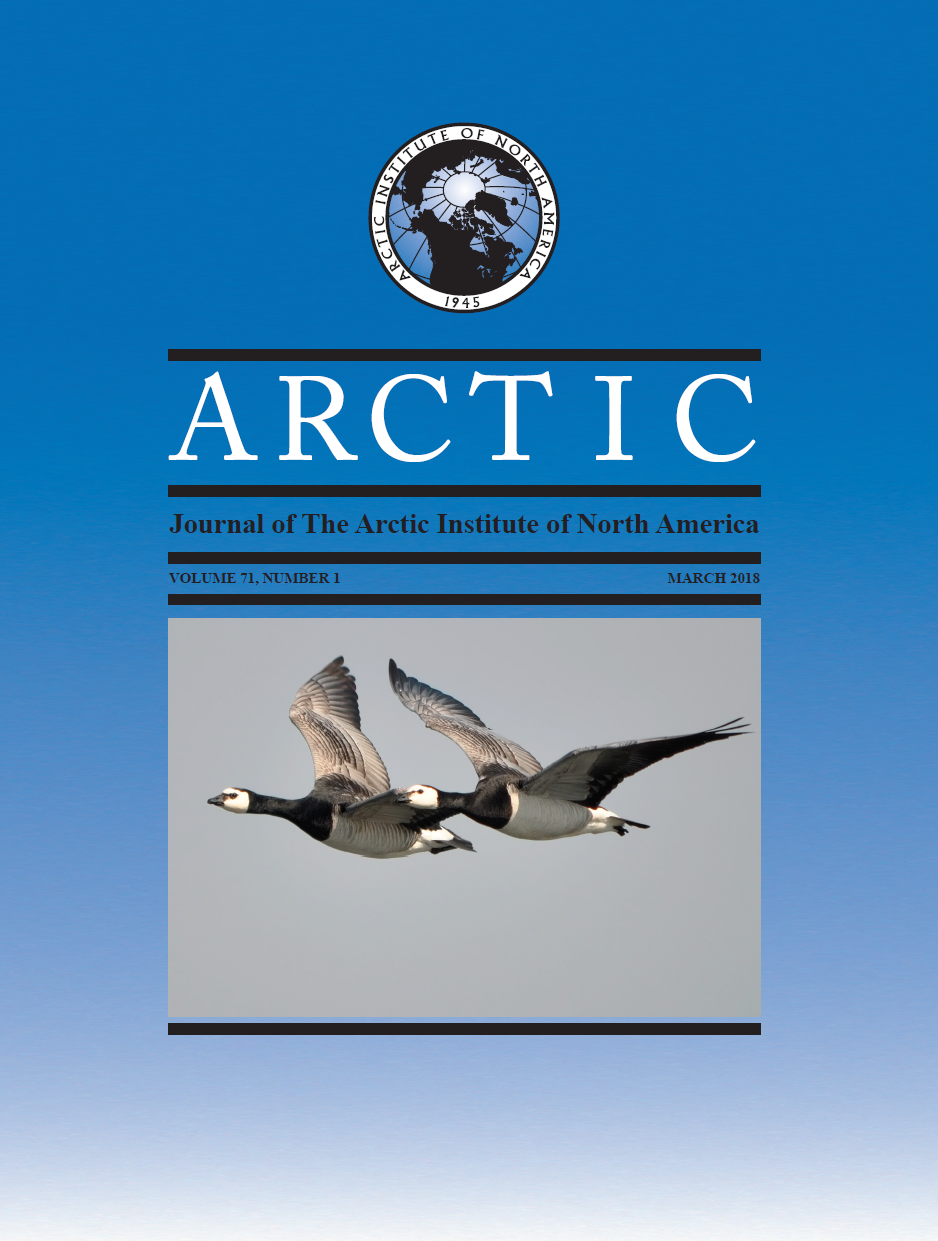The Effect of Road Proximity on Arthropod Communities in Yukon, Canada
DOI:
https://doi.org/10.14430/arctic4702Keywords:
roads, arthropods, entomology, northern, Subarctic, tundra, disturbance, insects, Hymenoptera, diversity, abundanceAbstract
Roads affect the ecosystems they traverse: road construction and maintenance constitute substantial disturbance, while roads and vehicles have hydrological, thermal, and other abiotic effects. Arthropod communities respond to these abiotic effects of roads, as well as to the indirect effects of vegetation changes. The Dempster Highway is a year-round gravel highway that travels 737 km through the Subarctic and Arctic ecosystems of Yukon and the Northwest Territories, Canada. In July 2016, in a Subarctic region of Yukon, we established nine transects spaced at 4 – 12 km intervals along a 56 km segment of the Dempster Highway and sampled arthropods at 1, 10, and 100 m from the highway on each transect. Our objective was to determine the effect of road proximity on the diversity, abundance, and composition of arthropod communities, with a special focus on the functionally and phylogenetically diverse group, Hymenoptera. We found that total arthropod abundance was lowest at the intermediate distance from the road, a pattern driven by high Diptera abundance close to the road and high Collembola abundance far from the road. We suggest that Diptera may be responding to increased moisture and plant biomass near the road, while Collembola may be responding to changes in soil characteristics. Hymenoptera abundance was greater close to the road than farther away, a pattern that may be driven by high Diptera parasitoid abundance near the road. Our results suggest that arthropods are good indicators of ecosystem function and that roads may have important effects on Subarctic ecosystem services (e.g., pollination, pest control). As infrastructural development continues in the Canadian North, it is of vital importance to anticipate and predict the effects of this development on the unique and diverse fauna of the Subarctic ecosystem.
Downloads
Downloads
Published
Issue
Section
License
Copyright (c) 2018 ARCTIC

This work is licensed under a Creative Commons Attribution 4.0 International License.


